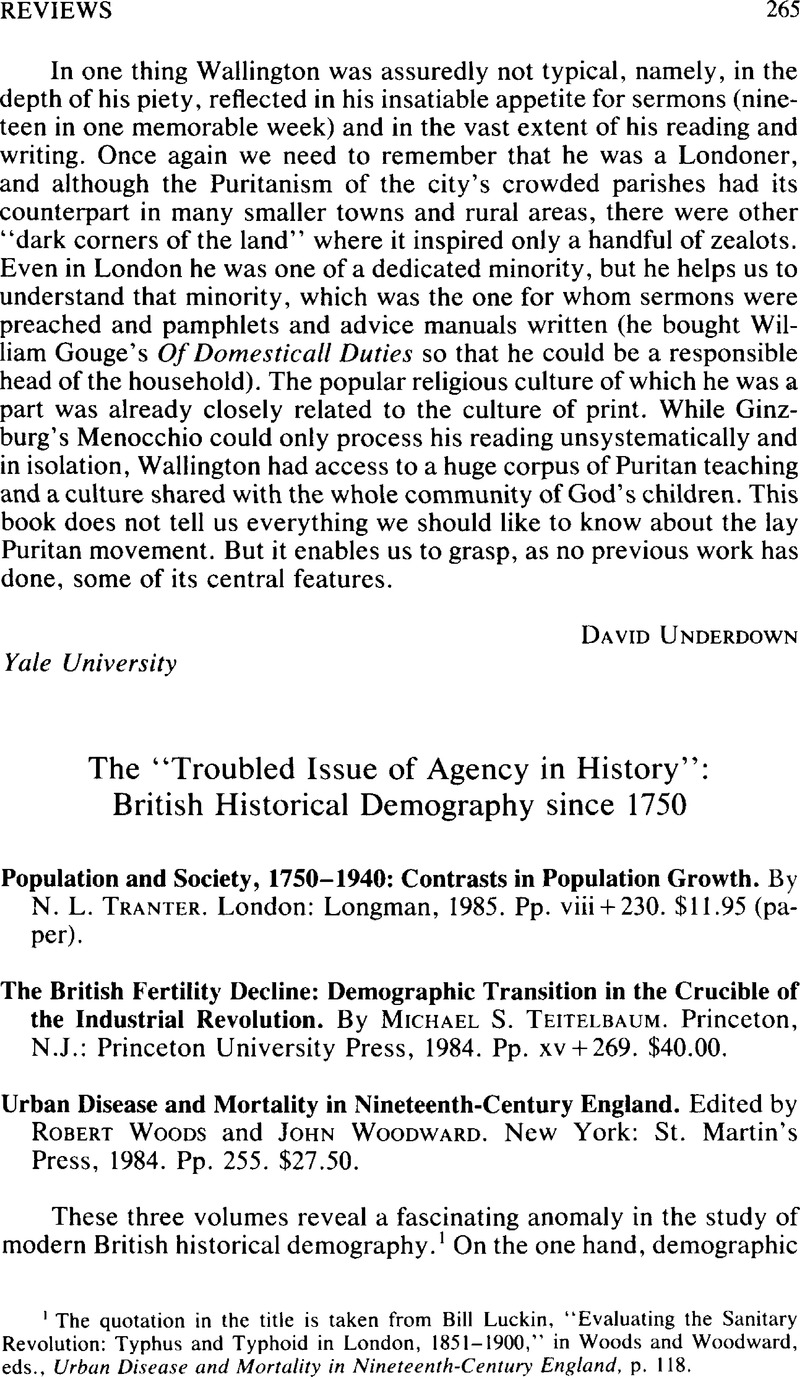No CrossRef data available.
Published online by Cambridge University Press: 10 January 2014

1 The quotation in the title is taken from Bill Luckin, “Evaluating the Sanitary Revolution: Typhus and Typhoid in London, 1851-1900,” in Woods, and Woodward, , eds., Urban Disease and Mortality in Nineteenth-Century England, p. 118Google Scholar.
2 McKeown, Thomas, The Modern Rise of Population (London, 1976), p. 128Google Scholar.
3 Coale, Ansley J. and Watkins, Susan Cotts, eds., The Decline of Fertility in Europe (Princeton, N.J., 1986)Google Scholar, provides an overview of findings of the Princeton project. See also the review symposium with contributions by Andorka, Rudolf, Levine, David, and Tilly, Charles in Population and Development Review 12 (1986): 323–40Google Scholar.
4 van de Walle, Francine, “Education and the Demographic Transition in Switzerland,” Population and Development Review 6 (1980): 463–72CrossRefGoogle Scholar.
5 For the implications for policy in nations with currently high levels of fertility, see Knodel, John and van de Walle, Etienne, “Lessons from the Past: Policy Implications of Historical Fertility Studies,” Population and Development Review 5 (1979): 217–45CrossRefGoogle Scholar (reprinted in Coale and Watkins, eds., pp. 390–419).
6 Smith, Daniel Scott, “A Mean and Random Past: The Implications of Variance for History,” Historical Methods 17 (1984): 141–48CrossRefGoogle Scholar.
7 Matthiessen, Poul C. and McCann, James C., “The Role of Mortality in the European Fertility Transition: Aggregate-Level Relations,” in The Effects of Infant and Child Mortality on Fertility, ed. Preston, Samuel H. (New York, 1978), pp. 47–68Google Scholar.
8 Lindert, Peter H. and Williamson, Jeffrey G., “English Workers' Living Standards during the Industrial Revolution: A New Look,” Economic History Review, 2d ser., 36 (1983): 20–21Google Scholar; Smith, Daniel Scott, “Differential Mortality in the United States before 1900,” Journal of Interdisciplinary History 13 (1983): 752–59Google Scholar.